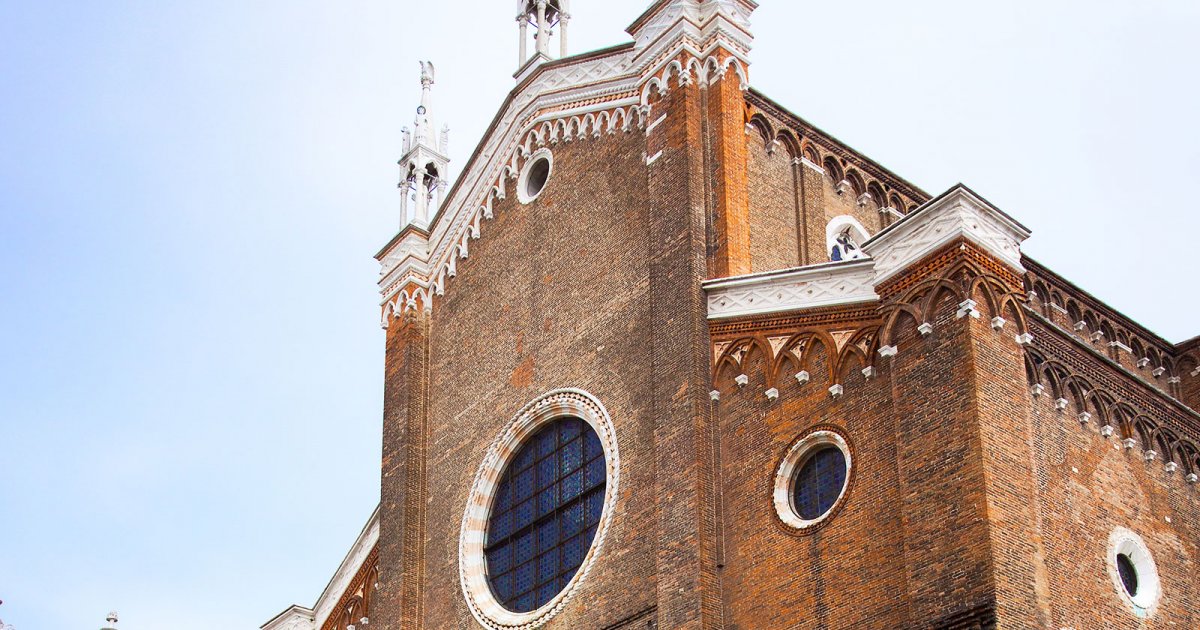SAN ZANIPOLO, Exterior
 Language: English / USA
Language: English / USA
It's time to take a walk around the church from the outside to admire it in its vastness; it is more than one hundred meters long, and the dome is over 55 meters tall. At the end of the left side, you'll see the building that now houses part of the Dominican convent and was once the School of St. Ursula: the beautiful paintings of Carpaccio that you may have already seen in the Accademia Gallery are from here. As you can see, this church is beautiful everywhere you look, even in the back, where it's embellished by two thin rows of Gothic windows.
In fact, the basilica's construction began from the back in 1234; it took over 100 years to build the entire structure. And another century to decorate it! It was finally completed when the finishing touches were made on the façade in the first half of the 1400s, which as you saw is divided into three parts and opened by circular windows. Besides the already mentioned statues of St. Mark, John and Paul, on the slopes of the roof you can see three more figures: St. Dominic, founder of the Order the church belongs to, St. Jerome and St. Peter the Martyr, who was famous for being the first Dominican martyr. You should also admire the gorgeous portal with its majestic pointed arch, lush with festoons symbolizing the Resurrection of Christ.
In the door's wooden bas-relief you might recognize the main Dominicans symbols, like the dog with a torch in his mouth, which is linked to a fascinating legend. It is said that Dominic's mother dreamed of giving birth to a dog who carried a flaming torch around the world. Of course it was a premonition: the burning torch was the Order that was then founded by her son. The same Dominicans were established with a play on words of popular origin: "Domini canes", the Lord's faithful dogs.
FUN FACT: despite its appearance that emanates peace, this basilica has a very tormented history. In the 1500s an explosion destroyed the refectory, which in that age was used as a gunpowder store. At the beginning of the 1800s Napoleon closed the monastery and turned it into a hospital, and various works of art were moved elsewhere. And as if that weren't enough, sixty years later a fire ravaged the Chapel of the Rosary, destroying a masterpiece by Titian: The Assassination of St. Peter the Martyr.



